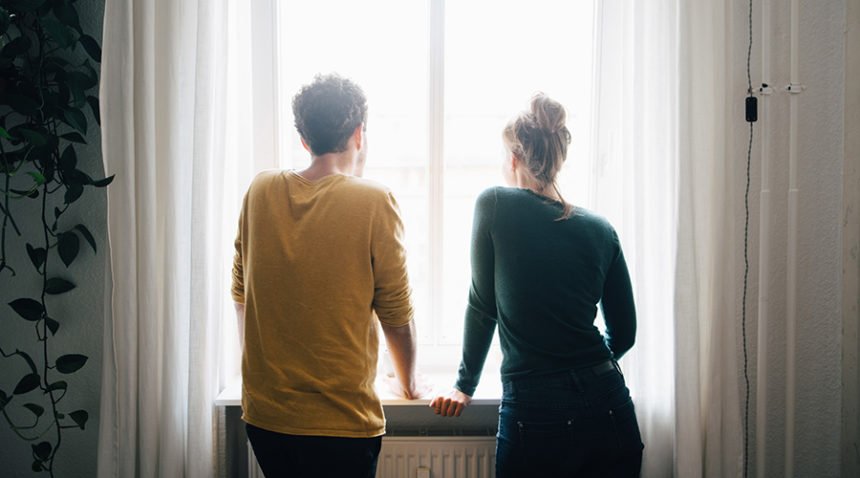During a pandemic, it’s natural to feel fearful in public spaces such as the grocery store or a movie theater.
But for people with agoraphobia, these feelings aren’t pandemic-specific. This mental illness is marked by persistent fear and avoidance of certain places and situations. People with agoraphobia are fearful that if they are in a crowd or with a group of people, they might feel intense anxiety and not be able to escape.
UNC Health psychiatrist Mary Kimmel, MD, explains more about the disorder and its intersection with COVID-19.
What Is Agoraphobia?
Agoraphobia is an anxiety disorder in which a person has trouble feeling safe in places outside of his or her home, particularly in crowds. Anxiety can be triggered by going to a concert or sporting event, or by traveling in a car, bus or airplane. When the person with agoraphobia feels anxious or trapped, he or she could have a panic attack.
People with agoraphobia have a difficult time differentiating between a perception of fear versus actual danger, and they fear that a loss of control (as in, the ability to leave a space quickly) will make them unsafe.
Signs and Symptoms of Agoraphobia
People with agoraphobia commonly experience:
- Intense fear of crowds, enclosed spaces or wide-open spaces
- Worry
- Rapid heartbeat
- Rapid breathing (hyperventilation)
- Headaches
- Double or blurry vision
- Elevated blood pressure
- Sweaty or clammy skin
“It may be helpful to think of agoraphobia as a way your system is trying to protect you but may be doing so at times when it is no longer helpful. For example, if you have a history of trauma, your system may be reacting, even in some place like a grocery store, as if you need to be on guard and hypervigilant to protect your safety,” Dr. Kimmel says.
Agoraphobia Risk Factors and Causes
Diagnosable agoraphobia is relatively uncommon; just under 2 percent of the population has it. The symptoms usually emerge in adolescence or early adulthood, typically before age 35.
Risk factors may include:
- History of depression or social phobia
- Family history of anxiety or phobias
- Lack of access to a support system
The cause of agoraphobia is different for every person, Dr. Kimmel says. Anxiety disorders are known to have both genetic and environmental components; that is to say, the genes you inherit and the environment you inhabit both play a role in your mental health.
Sometimes a person has a panic attack in a given situation and then becomes afraid of that situation in the future. Negative childhood experiences, unhappy relationships, and stressful or traumatic events can also trigger agoraphobia.
Agoraphobia and COVID-19
Right now, because of COVID-19, people with agoraphobia may be under additional stress, and people with no history of agoraphobia could develop some of its features, Dr. Kimmel says.
“Going out has meant danger, you might get sick, you might bring it home to your kids, your family members … We’re all sort of trying to figure out what is the normal amount of going out? What is the amount of going out that you need to do?” Dr. Kimmel says.
For some people with agoraphobia, the coronavirus has validated the urge to stay home.
“For some patients, it’s been kind of a relief,” she says. “It’s been sanctioned that it’s OK not to go out.”
This period we’re in now, where the pandemic is ongoing and case rates remain high but children are back in school and some aspects of daily living are mostly back to normal, is confusing for people with or without agoraphobia, Dr. Kimmel adds.
“This hybrid space has been particularly difficult,” she says.
Treatment for Agoraphobia
It’s important to treat agoraphobia because it can impair a person’s quality of life and may worsen without treatment. In severe cases, a person can become housebound for years. Being under chronic stress causes overproduction of the hormone cortisol, which has been linked to diabetes and heart disease.
Treatment options include:
- Cognitive behavioral therapy: This type of treatment involves a person meeting with a therapist to discuss fears of leaving home and not being safe. The person with agoraphobia and the therapist will work together to discuss the fears and plan careful, gradual exposures.
- Medication: Antidepressants, particularly selective serotonin reuptake inhibitors, or SSRIs, help reduce the symptoms of anxiety and mood changes.
“Often, you need both. You need more than one tool,” Dr. Kimmel says. “It’s about gradually building up confidence and seeing that when you go out, even if you have a panic attack, you can handle it and move through it. You can accomplish the things you want and need to do.”
If you are struggling with symptoms of stress or mental illness, talk to your doctor. If you don’t have a doctor, find one near you.

